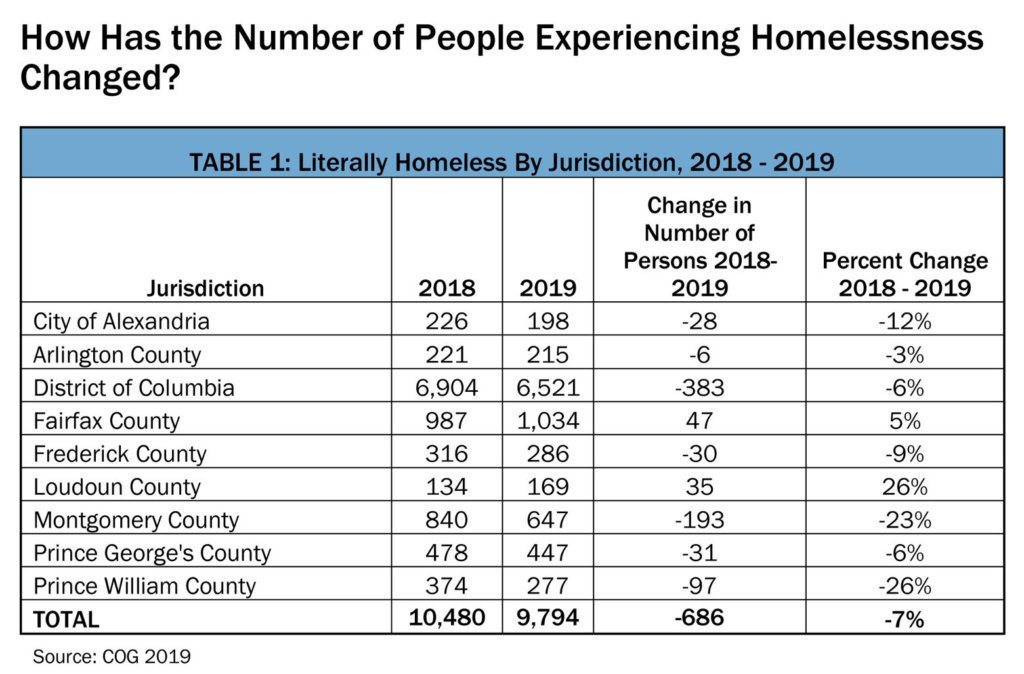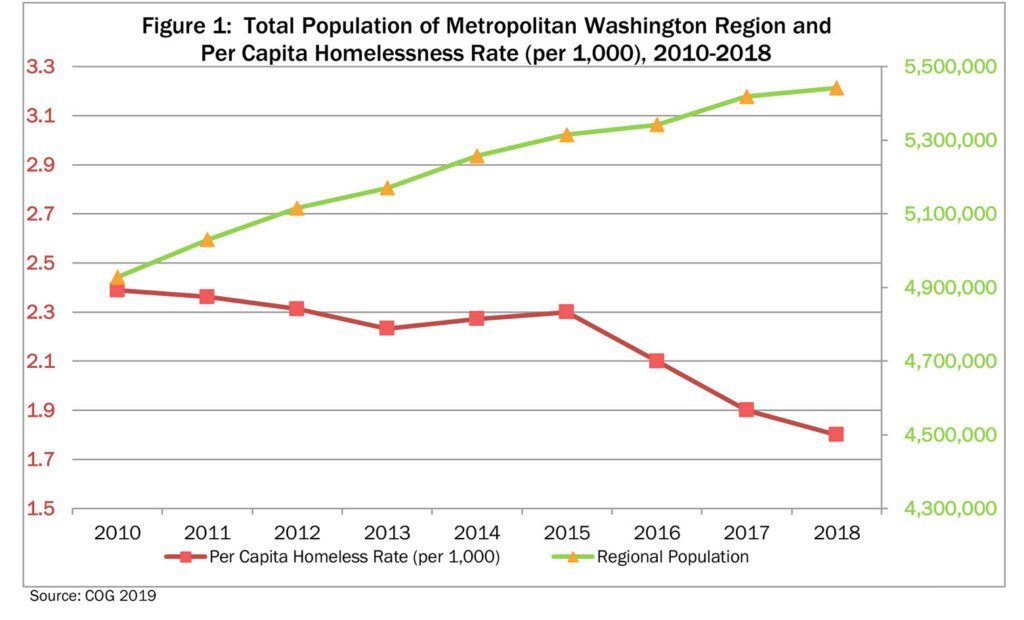Homelessness in the D.C. region has dropped for the third consecutive year, according to an annual study released by the Metropolitan Washington Council of Governments.
The study, which relies on a one night “snapshot” of homeless numbers across nine local jurisdictions, recorded 9,794 homeless individuals. That is the lowest number “since the region began coordinating in 2001,” and the first time it has dropped below 10,000, researchers said.
Numbers have been going down since 2017, when the count was more than 11,000.
Overall in 2019, the number of homeless individuals decreased by 7%, or nearly 690 people, when compared to 2018. It follows a similar reduction recorded in 2018, when the number decreased by 6%, according to the study.

Seven of the nine jurisdictions recorded a drop this year, with D.C. having the greatest reduction in the number of individuals. There were 383 fewer homeless people in the District in 2019 compared to last year.
The greatest reduction in the percentage of homelessness was in Virginia’s Prince William County, which recorded a steep 26% drop.
Other jurisdictions that saw double-digit percentage decreases include Maryland’s Montgomery County (23%) and the City of Alexandria in Virginia (12%).
According to the study, the downward trend in D.C. can be attributed primarily to the reduction in the number of homeless families, which was down by nearly 16%.
Researchers point to policy changes, specifically an effort launched in 2017 to provide year-round access to shelter and increased prevention services for families.

“The result of this change has allowed the system to normalize demand for services during peak hypothermia months and resulted in reduced numbers of families seeking shelter throughout the year,” researchers said.
Another policy change, the District’s “Homelessness Prevention Program,” has been helping families resolve housing crises and connecting them to shelters when there are no other options, according to the study.
The study does point to significant challenges ahead, however, including a “shortage of living wage jobs” and “increases in the region’s already-high rents.”
Read the full report (PDF).








